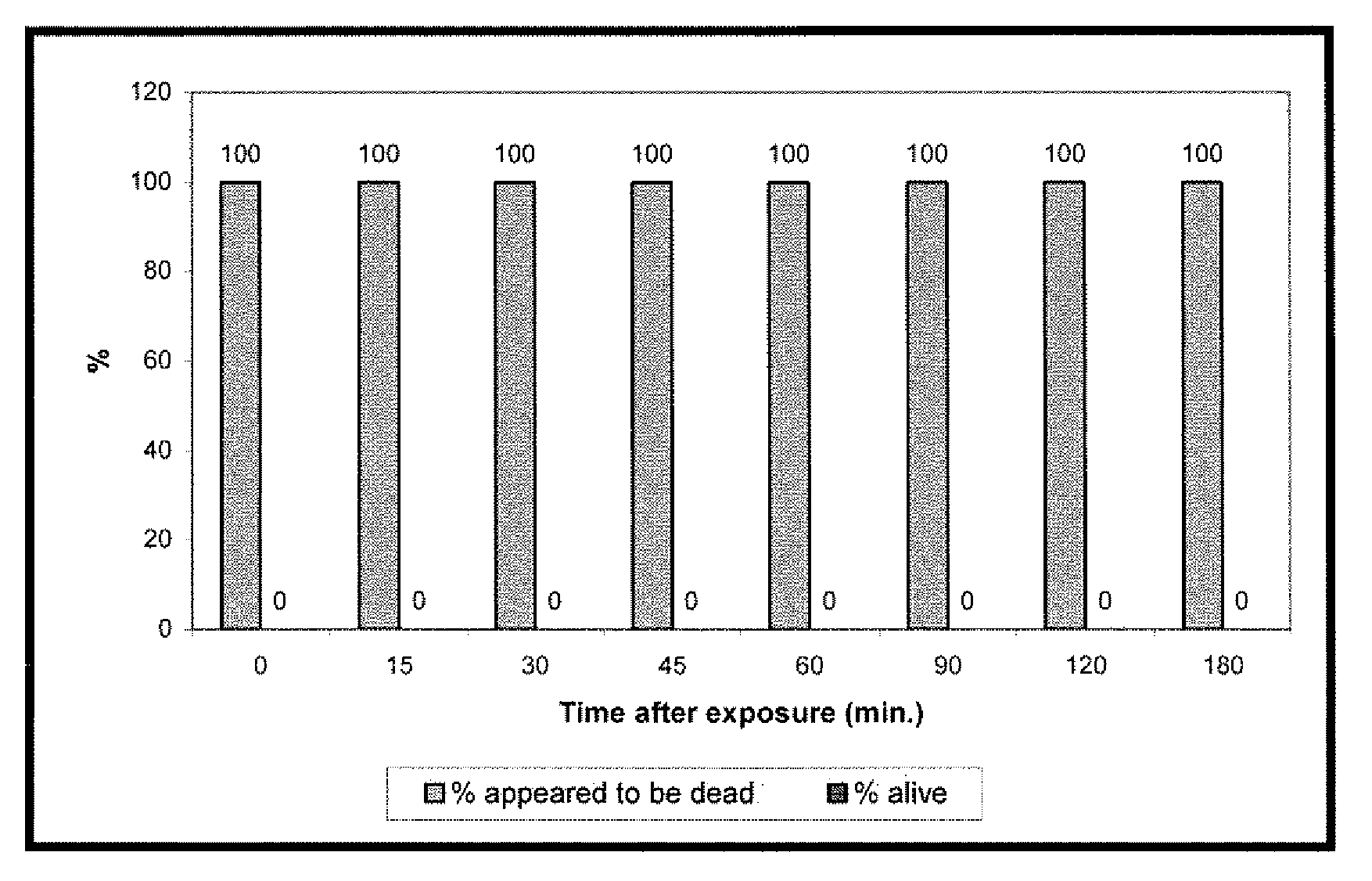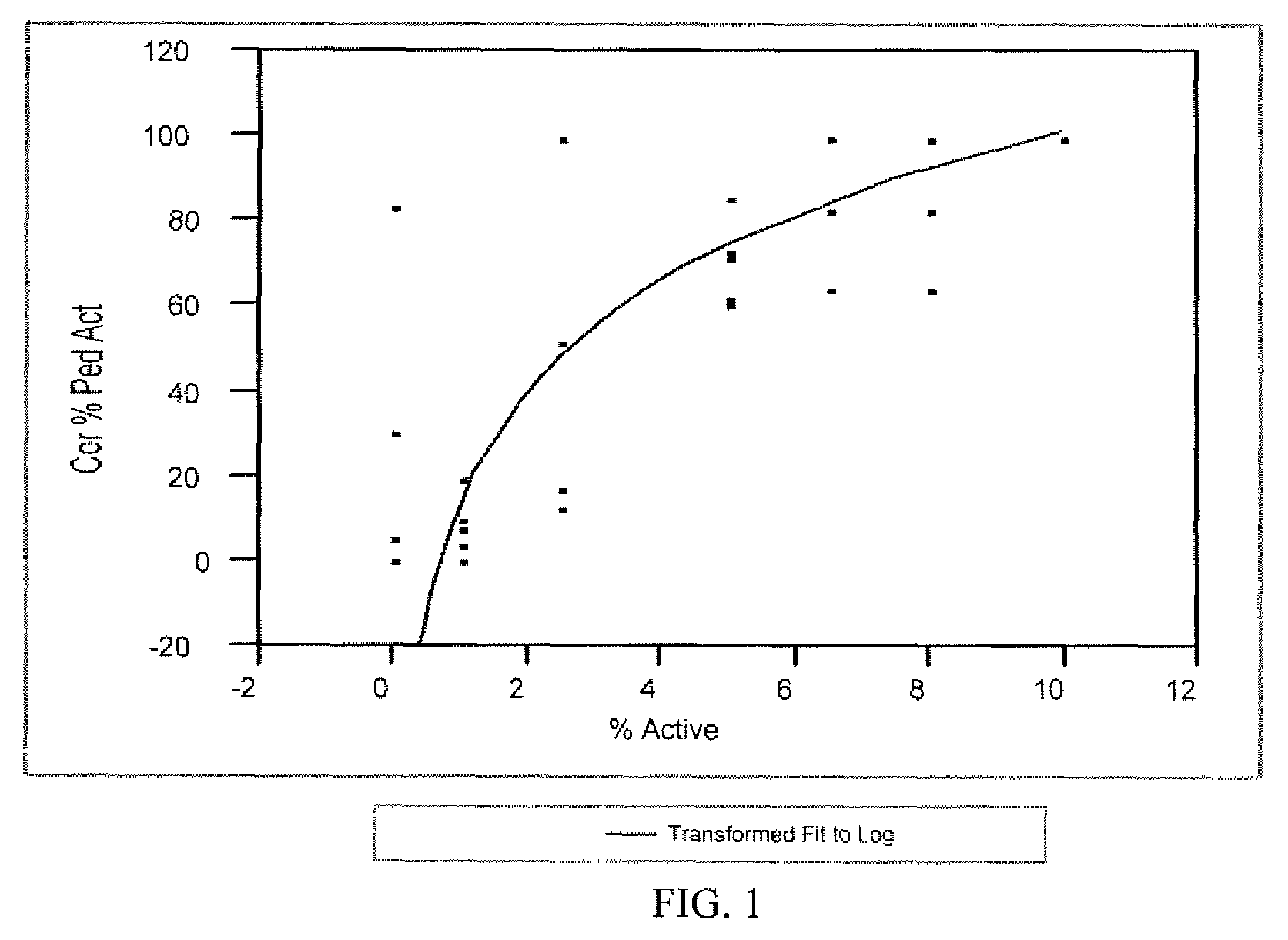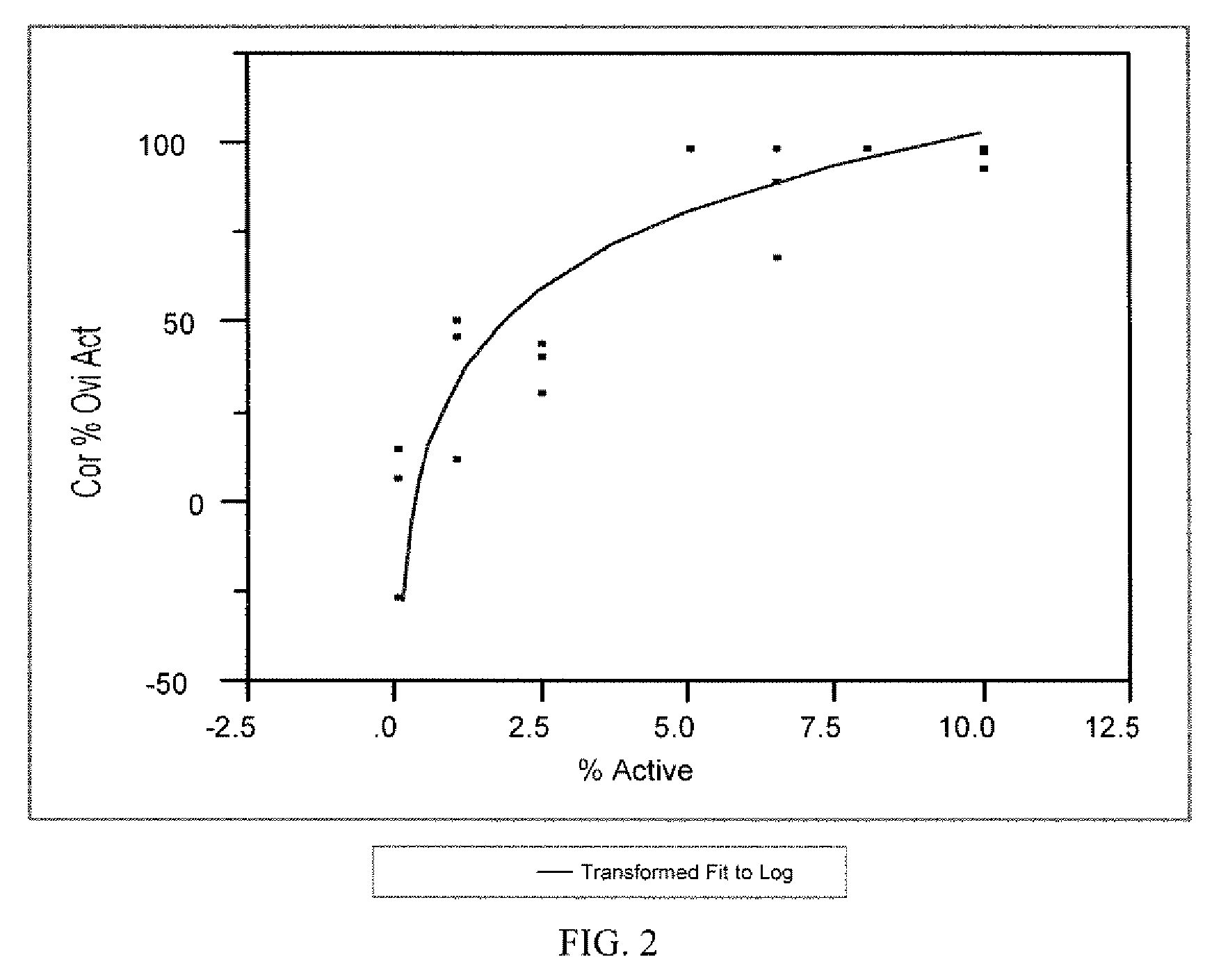Pest treatment composition
a technology for pests and compositions, applied in the field of agents and methods for the treatment of pest infestations, can solve the problems of irritating and painful, many compositions are toxic or generally unpleasant to the host, and the pesticides and repellents available in the prior art, etc., to achieve the effect of cleaning an individual and human
- Summary
- Abstract
- Description
- Claims
- Application Information
AI Technical Summary
Benefits of technology
Problems solved by technology
Method used
Image
Examples
examples
Summary of New In Vitro Assessments Developed
[0046]Currently, the most widely used in vitro methods used to assess the insecticidal qualities of a lice treatment product or compound are ASTM methods E 938-83, “Standard Test Method for Effectiveness of Liquid, Gel, or Cream Insecticides Against Adult Human Lice,” and E 1517-93, “Standard Test Method for Determining the Effectiveness of a Liquid, Gel, Cream, or Shampoo Insecticides Against Human Louse Ova.”
[0047]For these methods, a strain of human body lice has been adapted to feed on rabbit blood. The current ASTM tests are used early in the development process for initial pre-clinical assessments of possible lice treatments. Also, these tests are sometimes used to “substantiate” marketing claims of pediculicidal and / or ovicidal activity. Poor correlation between the in vitro results and in vivo efficacy may be seen especially for ovicidal assessments.
[0048]Therefore, a need existed to develop new in vitro methods that incorporate d...
PUM
 Login to View More
Login to View More Abstract
Description
Claims
Application Information
 Login to View More
Login to View More - R&D
- Intellectual Property
- Life Sciences
- Materials
- Tech Scout
- Unparalleled Data Quality
- Higher Quality Content
- 60% Fewer Hallucinations
Browse by: Latest US Patents, China's latest patents, Technical Efficacy Thesaurus, Application Domain, Technology Topic, Popular Technical Reports.
© 2025 PatSnap. All rights reserved.Legal|Privacy policy|Modern Slavery Act Transparency Statement|Sitemap|About US| Contact US: help@patsnap.com



